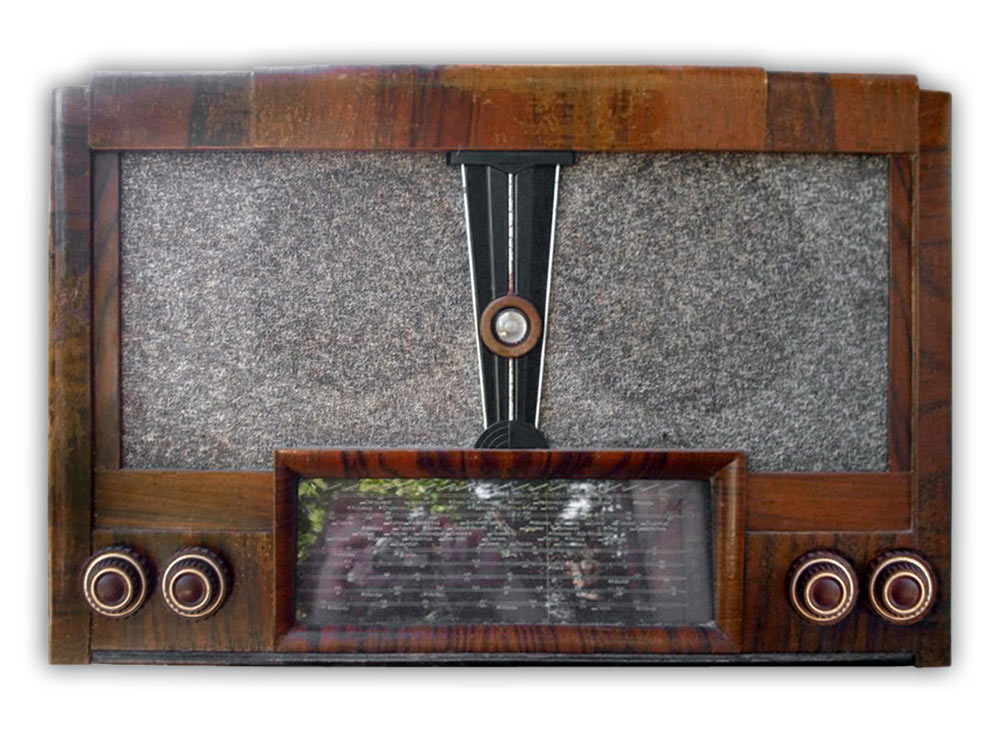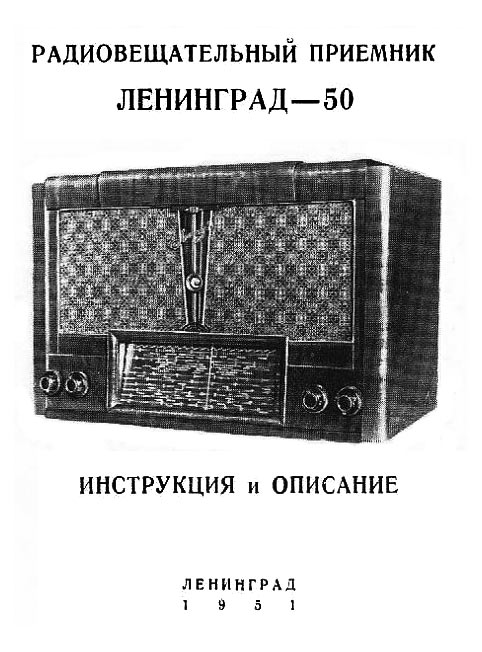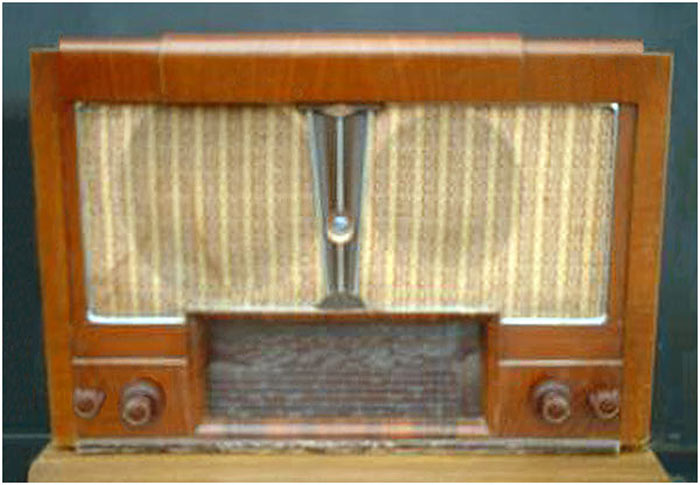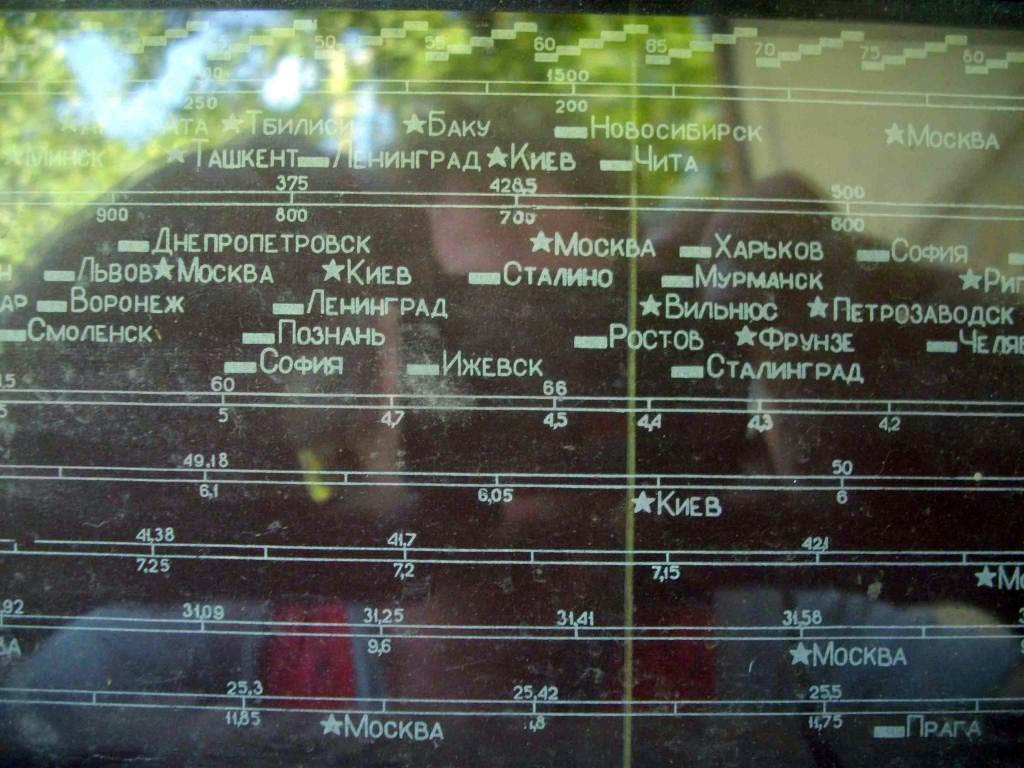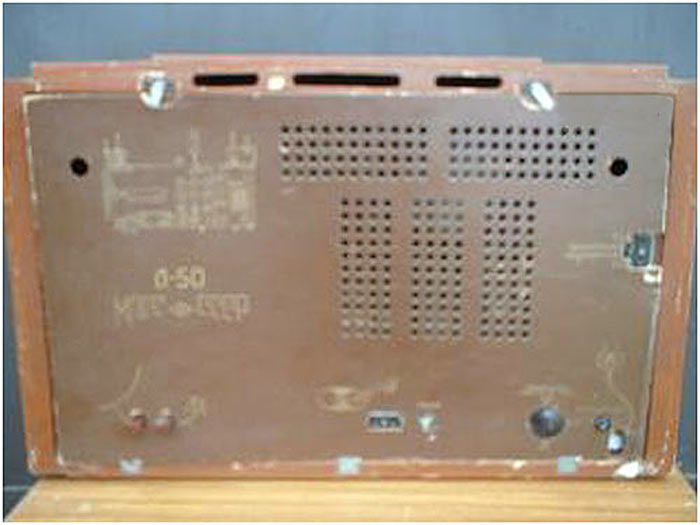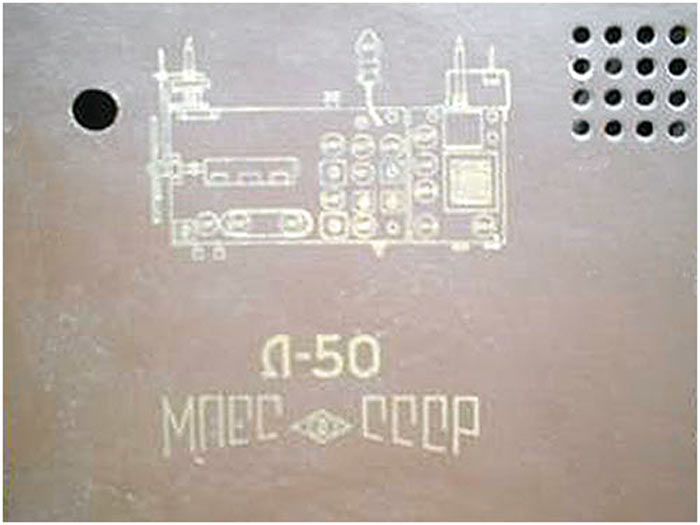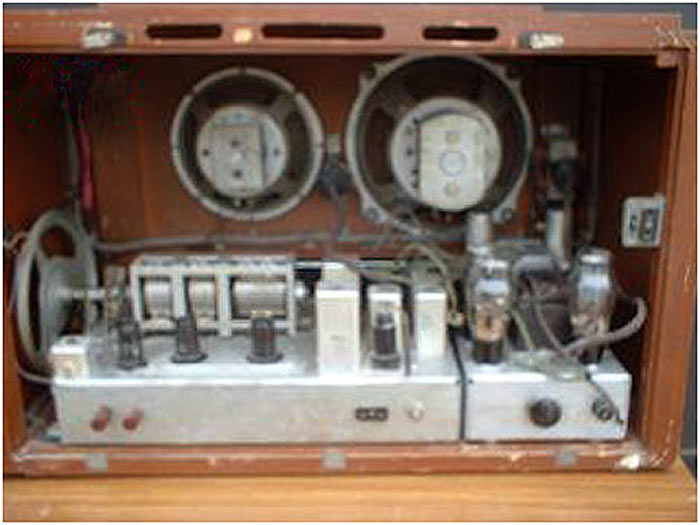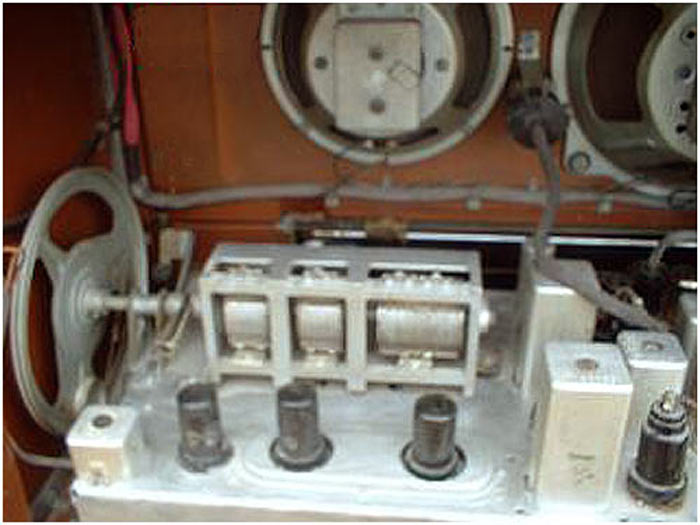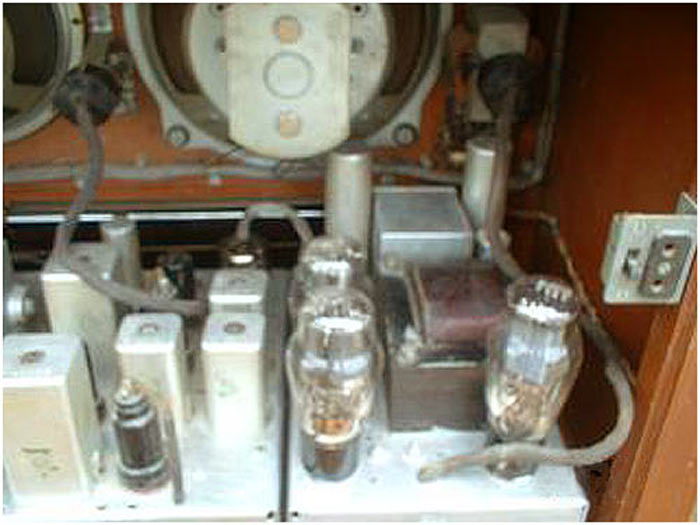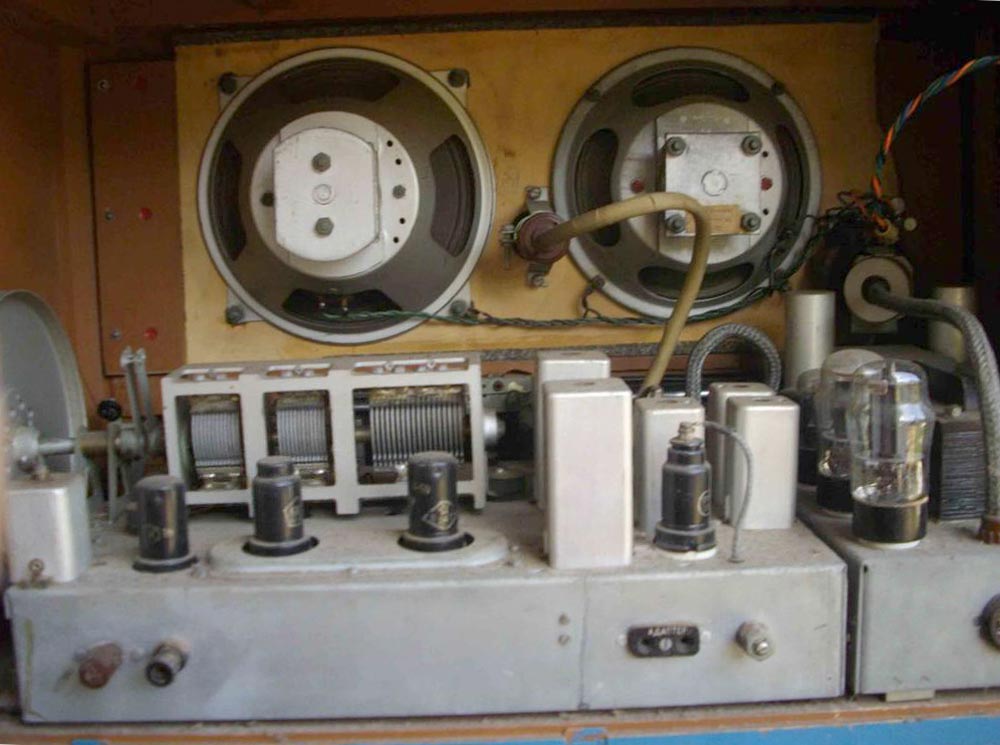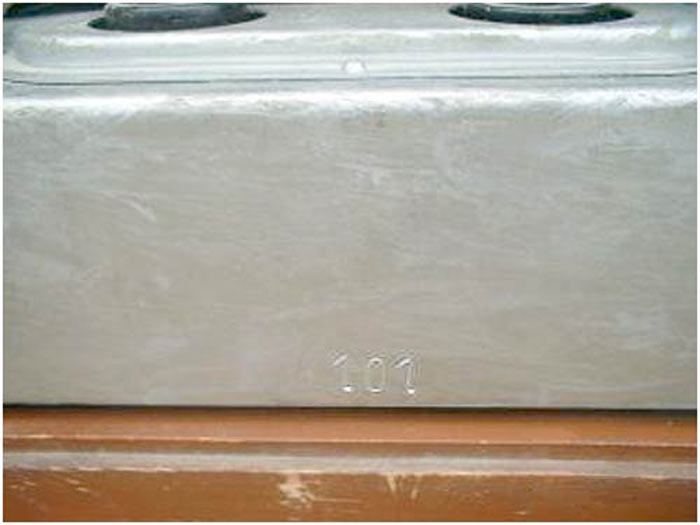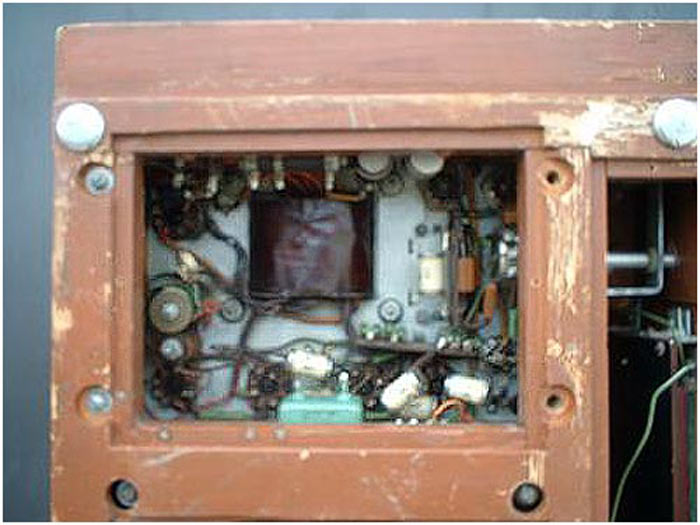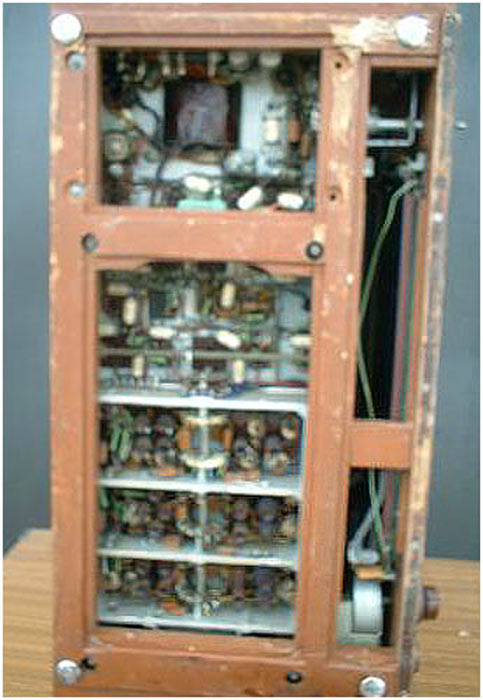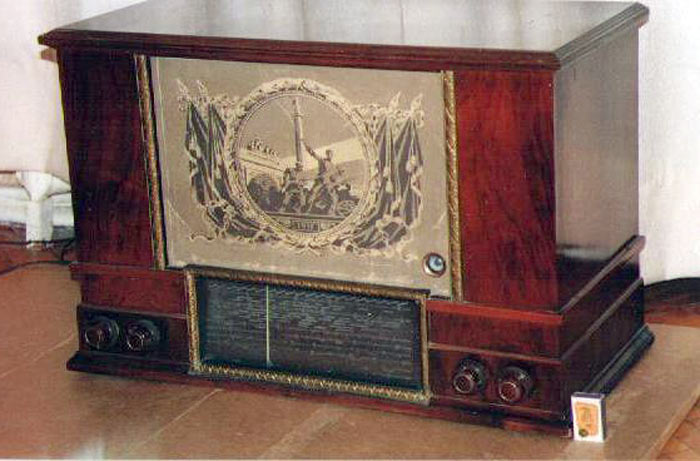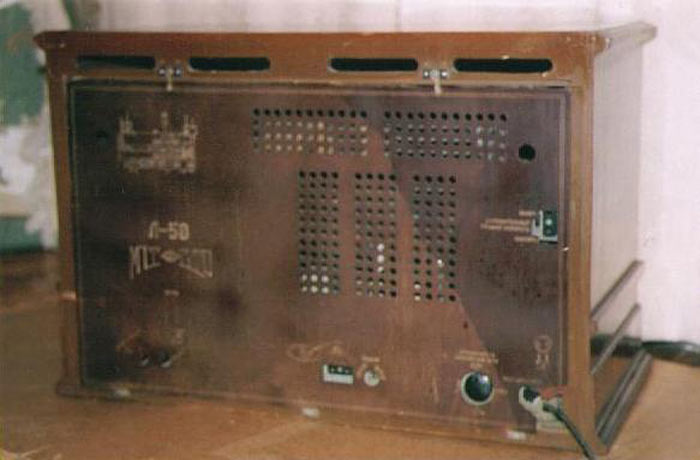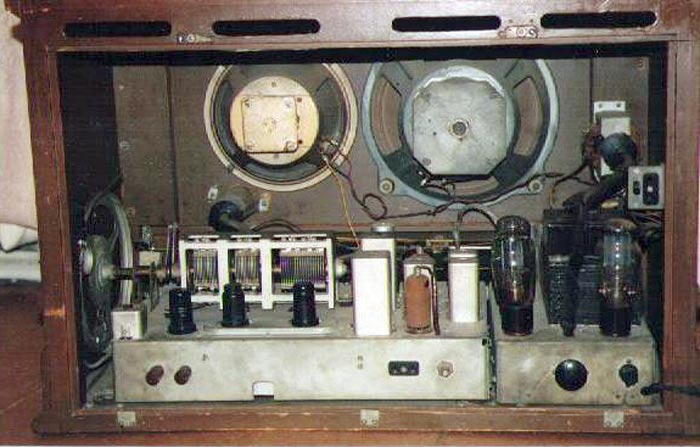Network tube radio receiver `` Leningrad-50 ''.
Tube radios.DomesticSince the beginning of 1950, the network lamp radio receiver "Leningrad-50" has been produced by the Leningrad plant named after V.I. Kozitsky. The receiver `` Leningrad-50 '' (L-50) was developed in 1949 and is a 15-tube superheterodyne of the first class powered from an AC network. Power consumption 190 watts. The receiver is equipped with 2 loop antennas. A noiseless setting has been introduced into the receiver, which allows eliminating noise in the LW and MW bands at the moments of restructuring. Ranges 8: LW, SV, 6 KV: 19, 25, 31, 41, 49 m, with stretched scales for easy tuning and overview 40 ... 75 m. The model has an adjustable IF bandwidth, enhanced AGC, separate timbres for HF and LF, fine tuning indicator, silent band switching. High sound quality is achieved by using two different-frequency loudspeakers. Output power 4 watts. The range of reproducible frequencies, with a wide IF bandwidth (18 kHz) 60 ... 8000 Hz, with an average (9 kHz) 60 ... 4000 Hz, with a narrow (5 kHz) 60 ... 2400 Hz. The receiver can be used to play back records from records using a separate electric player. The device is assembled on two metal chassis. On one, the HF part is assembled, on the other the ULF and the rectifier. The loudspeakers are mounted side by side on a reflective board, covered from the outside with a decorative cloth. Loop antennas are mounted inside the case in 2 mutually perpendicular planes: one on the right, the other under the top cover. A large horizontal scale is located at the bottom of the front panel. All control knobs are located on the sides of the scale - two single and two double ones. 1st knob on the left - mains switch and volume, 2nd (double) - IF band control and simultaneously HF tone control, the other - Bass tone control, 3rd (double) - receiver setting and antenna switch and pickup input switch (small), 4th range switch. On the rear wall of the first chassis are the antenna and ground clamps, pickup sockets, and a slotted axle for adjusting the silent tuning. The rear wall of the 2nd chassis houses the mains switch and fuse. The switch and auxiliary speaker jacks are also located here. The dimensions of the receiver are 650x445x350 mm. Weight 37 kg.